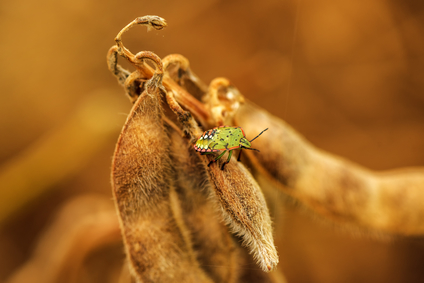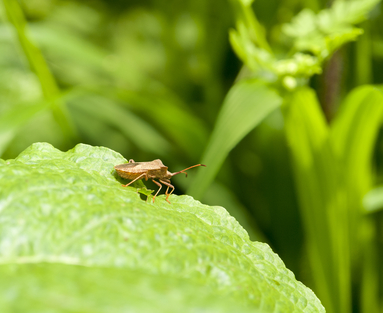23,000 Arnold MD Residents, Three Universities, One Stink Bug
- Esther M.
- Jan-30-2020
- Anne Arundel
Have you been thinking about putting together an edible spring garden? Simply block out the evening of February 18th and take a trip to Anne Arundel Community College. Both beginners and experts can learn about no-till gardening and get tips on protecting your beloved plants from weather and pests.

One bug that has been terrorizing farmers’ crops in Maryland and the United States as a whole for 22 years now is the stink bug. The University of Maryland has a great description of this pest and the types of plants they attack:
The brown marmorated stink bug (Halyomorpha halys) has become a fairly common pest in North America. Adult bugs are 14-17 mm and dark mottled brown. The last 2 antennal segments have alternating light and dark bands. The exposed edges of the abdomen also have light and dark banding. Eggs are light green, barrel-shaped, and laid from June to August. The young bugs (nymphs) are yellowish and mottled with black and red. Older nymphs more closely resemble the adults. The host list is long and includes many shade and fruit trees and woody ornamentals such as Buddleia spp.(butterfly bush), Catalpa spp., Rosa rugosa, Lonicera spp. (honeysuckle), Prunus persica (peach), Pyrus serotina (Asian Pear), and Abelia spp. Read more from the University of Maryland…
They change color, almost like a chameleon, from light green eggs to yellowish young bugs and finally brown marbled adult insects. And the crops they attack are just as varied.

You may think that because these foul-smelling bugs enjoy fruit trees and the like, we’re safe during the winter. Unfortunately, as Jeffrey Hahn with the University of Minnesota notes, this is not the case. Because when it gets colder, they might just join you indoors – in your home!
They will generally remain in cracks, crevices, voids, and other sheltered sites around the home as long as it stays cold. However, mild weather can cause them to wake up and move into the interior of a home. Fortunately, people typically see just a few stink bugs at a time; just physically remove them as you find them. They do not damage any property and are just a nuisance inside homes. Read more at Southern Minn…
So you may come across stink bugs inside your home, but you can pick them off easily using a vacuum cleaner, a towel trap or a light-plus-soapy-water combo, as explained in previous posts.

Homes aren’t the only victims of the brown marmorated stink bug (BMSB). Businesses and plants that thrive during the winter period are also targeted, as explained on Oregon State University’s BMSB page, where you can also report a sighting of this pest:
It also has a negative effect on urban agriculture, including backyard gardens where it damages fruits and vegetables, sometimes causing complete crop destruction. Businesses are also targeted by BMSB for overwintering. In the urban environment, populations of the pest build up primarily on ornamental trees. Read more from Oregon State University…
Can you imagine having potential clients or customers on your premises, and then all of a sudden there’s a terrible coriander-like smell? Talk about “bad for business.” And it would be terrible for your ornamental trees or winter vegetables to succumb to this beetle-looking bug.

Whether you’re a farmer, small-time gardener, homeowner or business manager, you can be affected by stink bugs. Thankfully, if you live in Arnold, MD the stink bug control experts are just a click and call away. Contact Backyard Bug Patrol. We’ll get rid of these pests and any others pronto.
